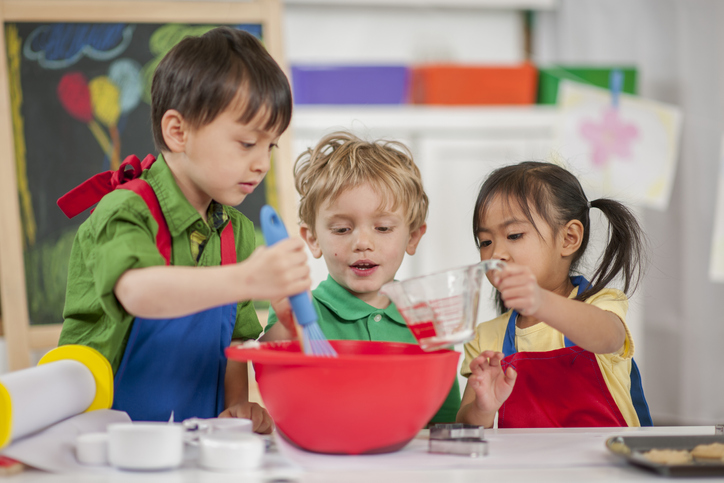A Recipe for Science
By Tracy Lavallee Exemplars Science Editor and Consultant

“Science is a collection of successful recipes.”
- Paul Valery
We all know that when we first start trying something new, it’s helpful to use a recipe. And bringing engaging, hands-on, minds-on, inquiry-based science into your classroom might feel like trying to prepare a four-course meal. But with a realistic, tested recipe, every teacher can create an exciting science experience for their students. You’re the chef of your classroom, so feed those hungry minds with our recipe for bringing more science into your teaching:
- Decide which recipe you want to create and whom you are feeding and nourishing. Find an activity or investigation that you think is possible. Think about how it will work with your students. It doesn’t have to fit in with your curriculum, either—you can pick an investigation just because it’s fun! We have a sample one for you to try that all kids love: Bunny Copters. I always start with just one bunny copter for the students to explore first.
- Read the directions for the recipe. Read it all the way through. See the big picture of the science involved and what students need to know and do before starting the investigation. It’s okay if you are not familiar with the science involved or not sure how to let go of some control in your classroom. Keep it simple.
You can learn right alongside your students. Ask them questions, Be a scientist, too! You can also use this as a time to develop some new routines like scientists’ meetings, respectful communication, teamwork, science notebooks … or other ideas that align with your current classroom focus. This is a rich opportunity to create and establish a safe and respectful science classroom community. Learn more here: Scientists Meeting. - Gather the ingredients. Again, make sure it is possible. Do you have the materials necessary? Can you get donations from families? What’s around the school that others could share with you? There are many science investigations that are not material-intensive—investigations that lend themselves to using everyday items. Keep it simple! Design some new uses for a straw, a spoon, a clothespin, a wooden craft stick, etc. You will start to see things around you that will inspire you to come up with your own ideas. Science is all around us!
Inventions and feats of engineering are great examples or challenges that kids can get excited about. One that I love to use with students only has two materials: 5 x 7-inch index cards and a dictionary. The challenge is to design something using only four index cards that will support the weight of the dictionary up off the table. No tape, no glue, no fasteners of any type. I usually start with groups of two or three students and focus on some Team Building Skills while we’re at it. Exemplars has a number of other great STEM/engineering tasks in our Science Library. Take a look at this one: Can You Keep Ice from Melting? - Follow the directions and adapt as needed. It is important to remember that in science, the process of inquiry is not linear. We use the 5 E's of Inquiry Science. We also call this guided-inquiry practice, because there is so much that students can learn through this process: asking questions, designing and conducting investigations, controlling variables, collecting and organizing data, and using data to explain thinking and conclusions. All these inquiry skills can and should be taught so that students gain confidence in their abilities as scientists. Think of the process as teachable moments for different parts of the process.
- Reflect and get creative. What worked well and what didn’t work well with your students? What can you change or add to make this more engaging, and more student-directed? Remember, you’re the chef—and by now you’re ready to add your own signature ingredients!
Enjoy and have fun. This is the most important step for this recipe to be successful. It is our hope that you now feel more confident with teaching science in your classroom. We know your students will love what you serve! We hope that you will, too!

